Abstract
The growth constant and Y (sucrose) (grams of cells per mole of sucrose) for NH3-grown cultures of Clostridium pasteurianum were 1.7 times those of N2-grown cultures, whereas the rate of sucrose utilized per gram of cells per hour was similar for both conditions. The Y (sucrose) of chemostat cultures grown on limiting NH3 under argon at generation times equal to those of N2-fixing cultures was less than that of cultures grown on excess NH3, but cells of NH3-limited cultures contained the N2-fixing system in high concentration. The concentration of the N2-fixing system in whole cells, when measured with adenosine triphosphate (ATP) nonlimiting, was more than twofold greater than the amount needed for the N2 actually fixed. Thus, energy production from sucrose, and not the concentration of the N2-fixing system nor the maximal rate at which N2 could be fixed, was the limiting factor for growth of N2-fixing cells. Either NH3 or some product of NH3 metabolism partially regulated the rate of sucrose metabolism since, when cultures fixing N2, growing on NH3, or growing on limiting NH3 in the absence of N2 were deprived of their nitrogen source, the rate of sucrose catabplism decreased. Calculations showed that the rate of ATP production was the growth rate-limiting factor in cells grown on N2, and that the increased sucrose requirement of N2-fixing cultures in part reflected the energy demand of N2 fixation. Calculations indicated that whole cells require about 20 moles of ATP for the fixation of 1 mole of N2 to 2 moles of NH3.
Full text
PDF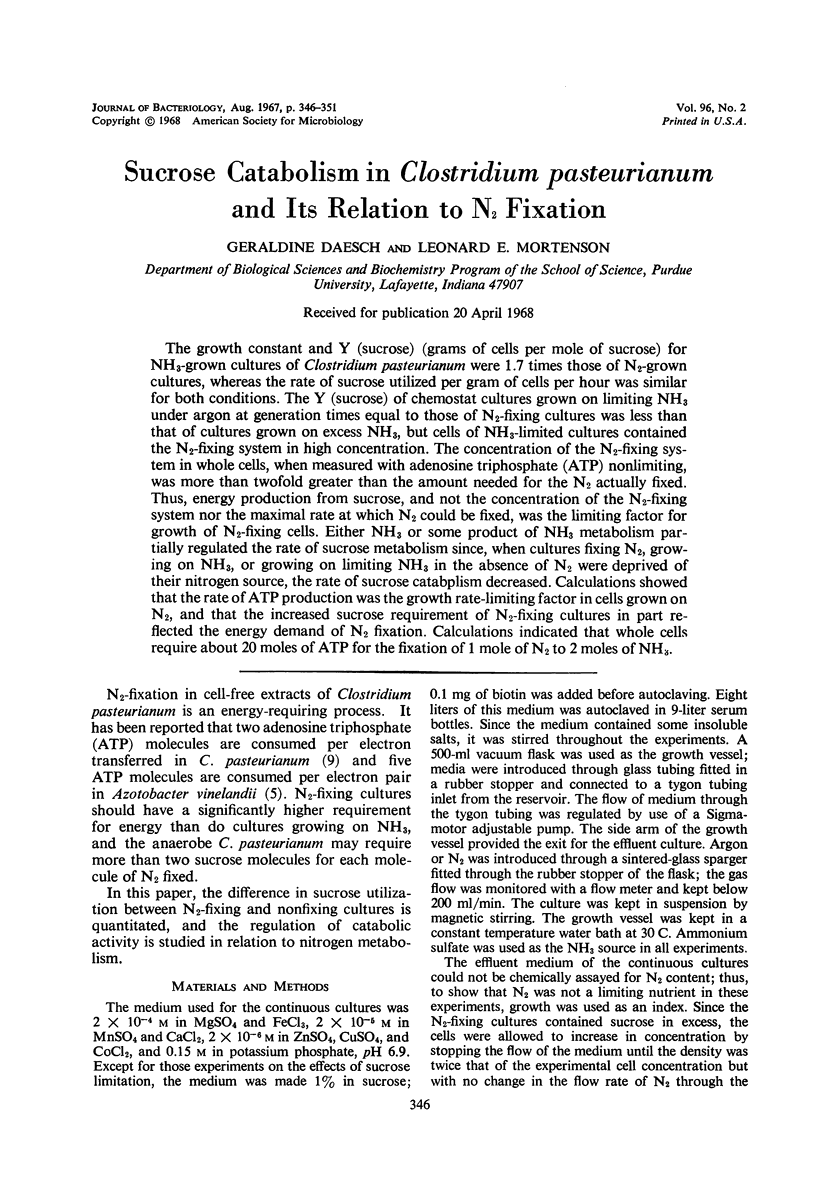

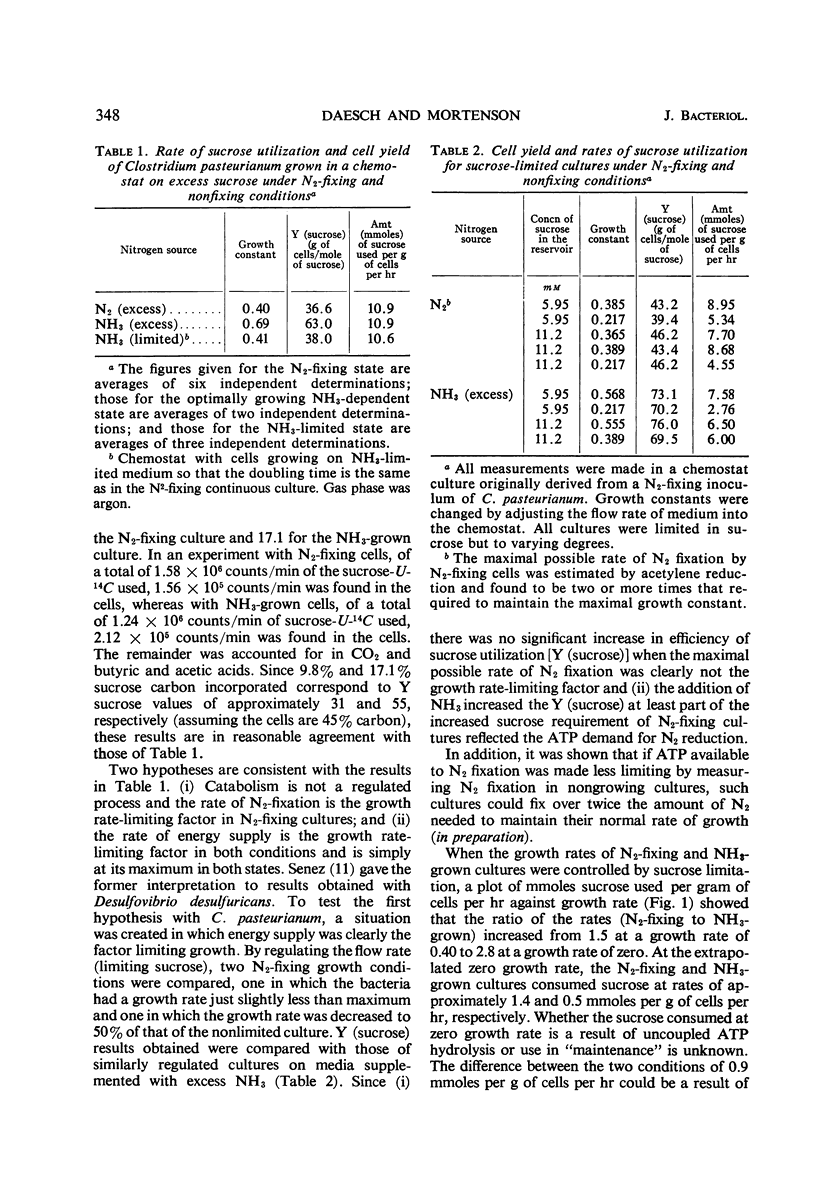
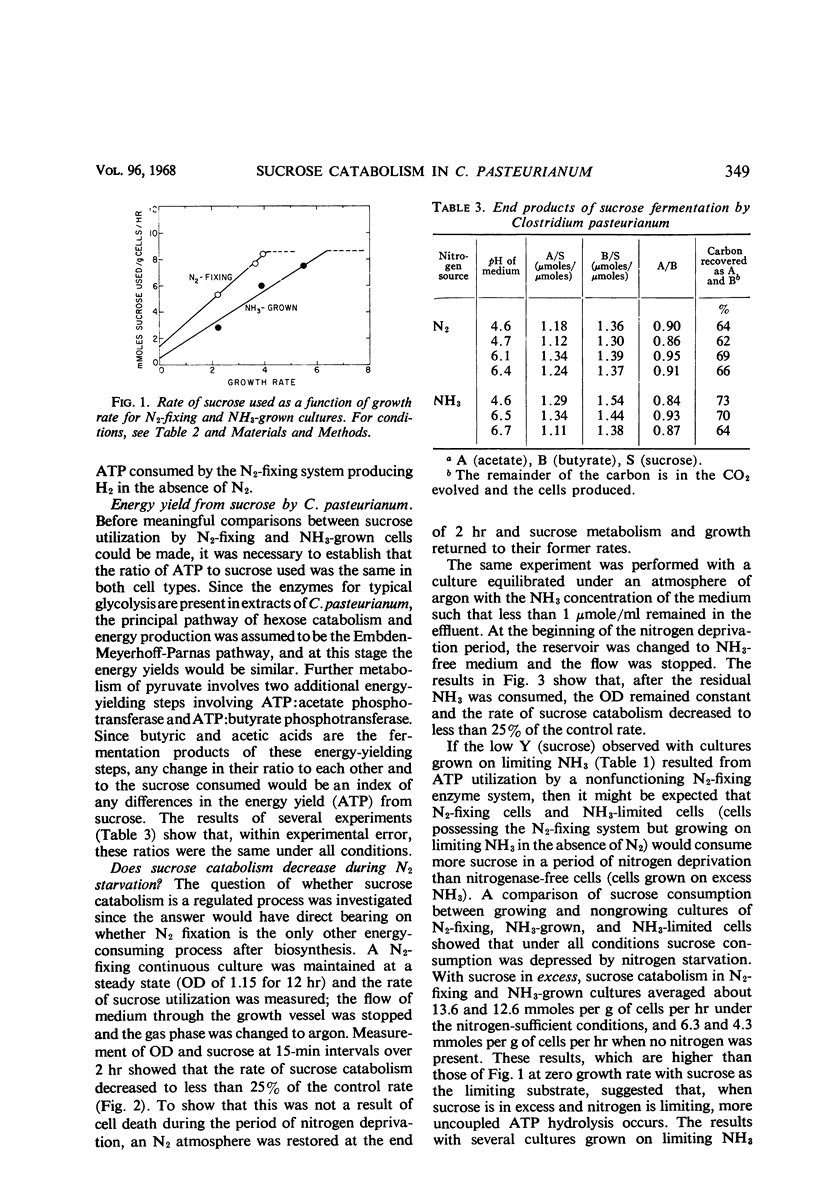
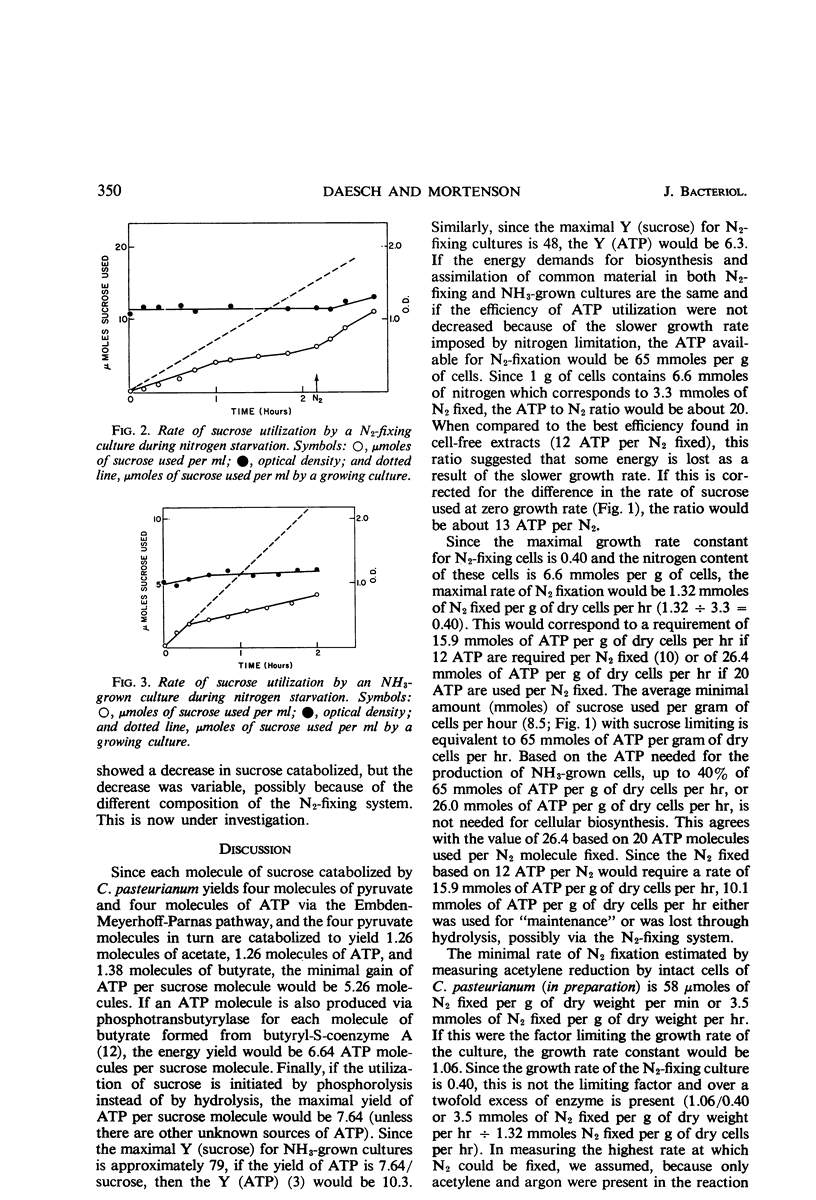
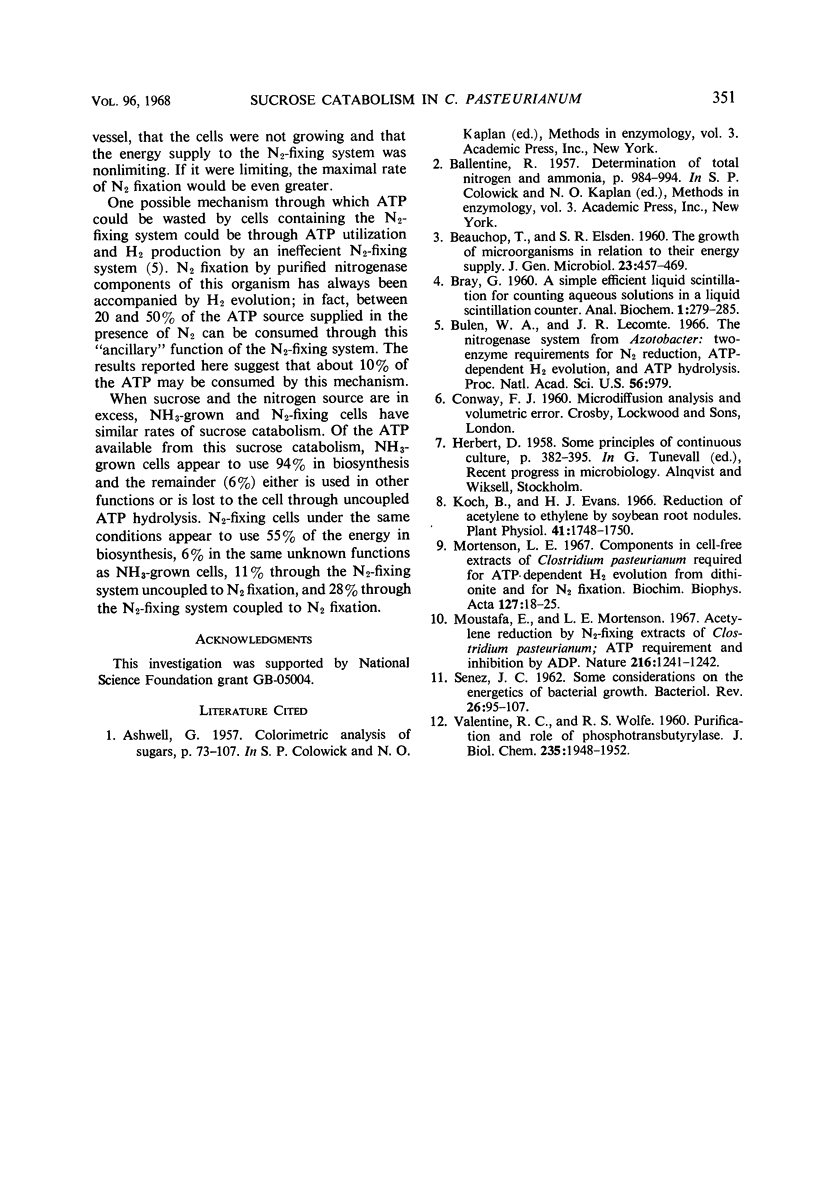
Selected References
These references are in PubMed. This may not be the complete list of references from this article.
- BAUCHOP T., ELSDEN S. R. The growth of micro-organisms in relation to their energy supply. J Gen Microbiol. 1960 Dec;23:457–469. doi: 10.1099/00221287-23-3-457. [DOI] [PubMed] [Google Scholar]
- Bulen W. A., LeComte J. R. The nitrogenase system from Azotobacter: two-enzyme requirement for N2 reduction, ATP-dependent H2 evolution, and ATP hydrolysis. Proc Natl Acad Sci U S A. 1966 Sep;56(3):979–986. doi: 10.1073/pnas.56.3.979. [DOI] [PMC free article] [PubMed] [Google Scholar]
- Koch B., Evans H. J. Reduction of acetylene to ethylene by soybean root nodules. Plant Physiol. 1966 Dec;41(10):1748–1750. doi: 10.1104/pp.41.10.1748. [DOI] [PMC free article] [PubMed] [Google Scholar]
- Mortenson L. E. Components of cell-free extracts of Clostridium pasteurianum required for ATP-dependent H2 evolution from dithionite and for N2 fixation. Biochim Biophys Acta. 1966 Sep 26;127(1):18–25. doi: 10.1016/0304-4165(66)90470-3. [DOI] [PubMed] [Google Scholar]
- Mustafa E., Mortenson L. E. Acetylene reduction by nitrogen fixing extracts of Clostridium pasteurianum: ATP requirement and inhibition by ADP. Nature. 1967 Dec 23;216(5121):1241–1242. doi: 10.1038/2161241a0. [DOI] [PubMed] [Google Scholar]
- SENEZ J. C. Some considerations on the energetics of bacterial growth. Bacteriol Rev. 1962 Jun;26:95–107. [PMC free article] [PubMed] [Google Scholar]
- VALENTINE R. C., WOLFE R. S. Purification and role of phosphotransbutyrylase. J Biol Chem. 1960 Jul;235:1948–1952. [PubMed] [Google Scholar]


